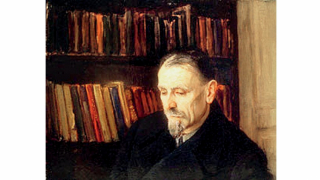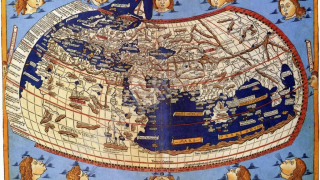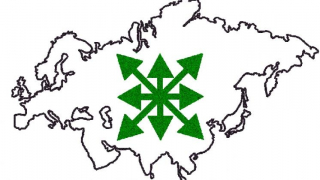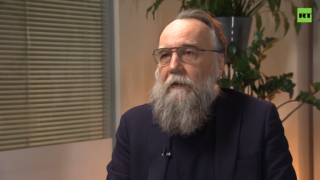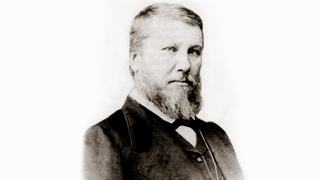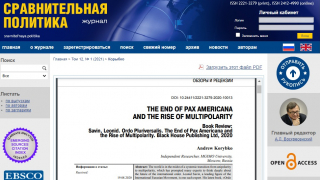Eurasiatism, from theory to practice
Let us start at the beginning: what is the Eurasian Economic Union? What is the significance of this organization?
As an organization, the EEU was created for the economic integration of the post-Soviet space through the implementation of the four freedoms - freedom of movement of goods, services, capital and labour. In other words, we are mainly talking about the creation of common markets and barrier-free access to the market of any EAEU member state. In today's world - whether one wants it or not - no nation state can do without international contacts and intensive interaction with others. This applies to all countries, large and small. It is simply the key to survival. Therefore, the question is not whether to integrate or not, but only with whom to integrate and on what basis.
Among all the EAEU countries - Armenia, Belarus, Kazakhstan, Kyrgyzstan and Russia - there is a historical continuity that goes back not only to the USSR and the Russian Empire, but even deeper. There are long-standing economic ties, a common cultural type, the use of a common language, and belonging to a single Eurasian civilization. Therefore, this regional integration is a win-win strategy. Although, of course, each of the participants, in joining this process, had primarily the realization of their own interests in mind, and for small economies the economic effect of participating in the integration process with a larger economy will always be greater than that of a large economy. However, by combining our potentials, we are not simply adding them up, but multiplying them. Thus, on the basis of the UEEA we are creating a powerful, rich and promising pole of the multipolar world - a large economic space that allows all participants to preserve and strengthen their sovereignty. It is no coincidence that the leaders of our countries declared at the end of 2023 their aspiration to achieve by 2045 the transformation of the UEEA into a self-sufficient, harmoniously developed and attractive macro-region for all countries of the world, with economic, technological and intellectual leadership and the maintenance of a high level of welfare of the population of the member states.
If we look around the world, we see that all regions are uniting economically: the US is increasingly cooperating with Mexico, Canada and the Asia-Pacific region. The EU has united all European countries and is trying to keep moving eastwards. China is creating its own integration zone - along the One Belt One Road project. Africa is uniting. Everyone realizes that no one can stand alone. In this context, the UEEA is an independent sovereign entity - open to other poles, but with sufficient scale for autonomy, first and foremost, in matters critical to the life of every society - energy and food, technological security and, in the near future, climate.
Is the EEU limited only to the economy?
The economy cannot be strictly isolated from other aspects: politics, culture, education, society, security. Yes, the EEU was created as an institution of economic integration and this is its main priority, and some member states adhere to this position. But any large-scale project requires a global vision, a long-term strategy, a system of principles and standards, a political and socio-cultural understanding.
Without this, everything stagnates.
Therefore, as the EEU and its structures and mechanisms grow stronger, we will have to face the need to establish a multifaceted dialogue between the member states. This is inevitable, as the elimination of internal customs borders and trade barriers brings up discussions on the need to equalize the competitive advantages of the individual economies involved in integration and the validity of the flow of investment, financing and tax base from one state to another. The issue of the harmonization of customs administration is already very much on the agenda and, in the future, there will be the issue of harmonizing tax and financial systems, or, for example, the education system, without which a common labour market is impossible.
It will be necessary to harmonize social protection and health care systems, because these are ultimately included in the cost of products entering the common market. This will determine a company's advantage over competitors in other EAEU member states. These are very complex issues. If we do not have an awareness of our commonality of civilizations, which, in addition to trade, includes spiritual and moral values, worldview, culture, science, education, art, sport and much more, it will be very difficult for future negotiators to reach an agreement. All these issues will require political decisions and how the member states resolve them will determine the development of the Union. In the case of a project of such historic importance, it can be said that the economy is much more than the economy. It is the destiny and the guarantee of the welfare of every participant.
Does the EEU aim to compete with other regional integration projects? WTO, Atlantic integration, Chinese BRI, APEC, etc.?
No, we are not talking about any competition. The UEEA is open to interaction with other regional integration initiatives and our countries (together or separately) participate in many of them - the SCO, the BRICS, together with China we are working to connect the UEEA and the Belt and Road. We are actively cooperating to expand the free trade area with countries outside the UEEA, which should provide our raw material producers with more competitive conditions in larger export markets. Our association is not directed against anyone and pursues strictly constructive goals.
What relationship does the UEEA have with the ideology of Eurasiatism, which is very popular both in Russia and in other countries, primarily Kazakhstan and Turkey?
At first glance it would seem not, since we are talking on the one hand about a political philosophy founded in the 1920s and on the other hand about purely practical and economic initiatives in the 21st century. But if we take a closer look, we will see that the classics of Eurasianism - N. S. Trubetskoy, P. N. Savitsky, G. V. Vernadsky, N. G. Alekseev, L. N. Gumilev and others - turned out to be practically prophets as far as the transformation of Russia and the entire international system is concerned.
They predicted the decline of the West, the shift of the centre of gravity towards the civilizations and peoples of the East, the return of future Russia to traditional values, and the inevitability of the establishment of a multipolar system in the world. In this multipolar world, according to Eurasians, Russia and friendly Eurasian peoples have a common destiny and mission: to become one of these poles, together with the great powers of the East (China, India) and the West. Moreover, Eurasians severely criticize the Western world's attempt to impose its own system of norms and rules on the whole of humanity, so that the West itself always benefits. Eurasians themselves were in favour of a just, truly democratic and free world order without hegemonies and colonial practices.
Moreover, Eurasians insisted that Russia - Eurasia is not part of Western civilization, but is together with related peoples and cultures - an independent civilization. Eurasians spoke of the common fate of the East Slavic and Turkic, Finno-Ugric, Caucasian, Siberian and Northern Slavic peoples. The approximate borders of the Eurasian civilization they delineated are very close to the EAEU integration zone.
Is the EAEU an attractive entity for anyone, apart from some former Soviet republics?
Absolutely. There is a perception that the EAEU is a project exclusively for the post-Soviet space. In reality, this is not the case. Not only the former Soviet republics can become members of the UEEA. And there are countries that are considering this option for themselves. Interest in the UEEA will grow when the Union demonstrates convincing economic success, as it has done in the last two years. In addition, we are creating a kind of security umbrella for the EAEU member states, covering mainly energy and food issues. In today's complex world, you will agree that these are very serious factors that speak in favour of the attractiveness of our integration association. We see the future of northern Eurasia as a region that offers its inhabitants a decent living. Today, everyone is looking for a regional pole to join in order to realize their economic interests. Since the UEEA is not directed against anyone and does not require exclusivity for its members, all decisions are made on the basis of consensus, it is very attractive. Of course, the UEEA is a perfect fit for Azerbaijan, Uzbekistan (which now has observer status), Turkmenistan and Tajikistan. The economic advantages for them are obvious. If the governments of the Baltic States, Moldova or Ukraine were really interested in economic development, the EEU would help them a lot. Just compare the macroeconomic indicators of these countries with those of other post-Soviet countries that have normal working relations with Russia.
How are the North-South logistics and transport projects, which are gaining momentum today, related to Eurasian integration in the UEEA version?
This is the most important direction. Until recently, our main trading partner was the European Union. The abrupt severing of economic and all other ties with Russia should have led our country to collapse, but this did not happen. We managed very quickly to redirect our ties from the West to the East and to the global South, i.e. to the place where the economy and consumer markets are developing at the fastest pace. No one is under any illusion that the level of ties that existed between Russia and the EU can be restored in the near future. We have to be realistic and realize that the contradictions are too deep.
Therefore, relations with the global South are of particular importance to us. And here the North-South project offers us enormous opportunities. The North of Eurasia, where Russia is located, with its incalculable wealth, has access to the growing markets of South-East Asia and Africa through a system of transport and logistical arteries. Meridian networks connect Russia, via the Black Sea, with Turkey and the entire Middle East - Iraq, Syria, etc. In the Caspian region, transport routes are being laid through the territories of friendly countries, bringing our goods to Iran and its ports in the Persian Gulf and Indian Ocean, from where the road to the global South opens up. Preparations are underway for the construction of the Russian-gauge 1520 trans-Afghan railway from Uzbekistan to Pakistan and India. It will bring Siberia closer to China and, to the south, Thailand and Indonesia, as well as other countries in South-East Asia and the Indian Ocean. In return, the southern Eurasian countries will have access to the UEEA and so on to the Arctic. The UEEA has already concluded free trade agreements with Vietnam and Iran, and similar negotiations are ongoing with several other countries in the Global South. Together with our UEEA partners, we are forming a huge economic zone with a population that can meet the enormous demand for energy resources of all kinds, industrial goods, and high technology. Moreover, both macro-regions of Eurasia - north and south - have enormous scientific, cultural and human potential, which will come into play with the realization of the great north-south axis. This is the future. When we succeed in realizing this feat, the sovereignty of all participants will multiply.
What about the financial and currency system of the EEU? Will there be a move to a single regional currency?
For some reason, people always ask this question, as if everything depended on it. In reality, the dollar has been a convenient and reliable medium for international settlements. It has also been well used in the UEEA. Until the moment they decided to use it as a weapon in the hope of creating enough difficulties for our economy to collapse. As a result, many countries in the world tried it on themselves, the laws of entrepreneurship took over and a bifurcation of the international settlement system occurred. International trade, not only in the EAEU region, started to move away from the dollar to national currencies, new payment systems emerged and new relationships were established. As far as the EAEU is concerned, economic entities choose their own currencies for mutual exchanges. More than 90 per cent of payments are already made in national currencies.
Source: Кристалл Роста


